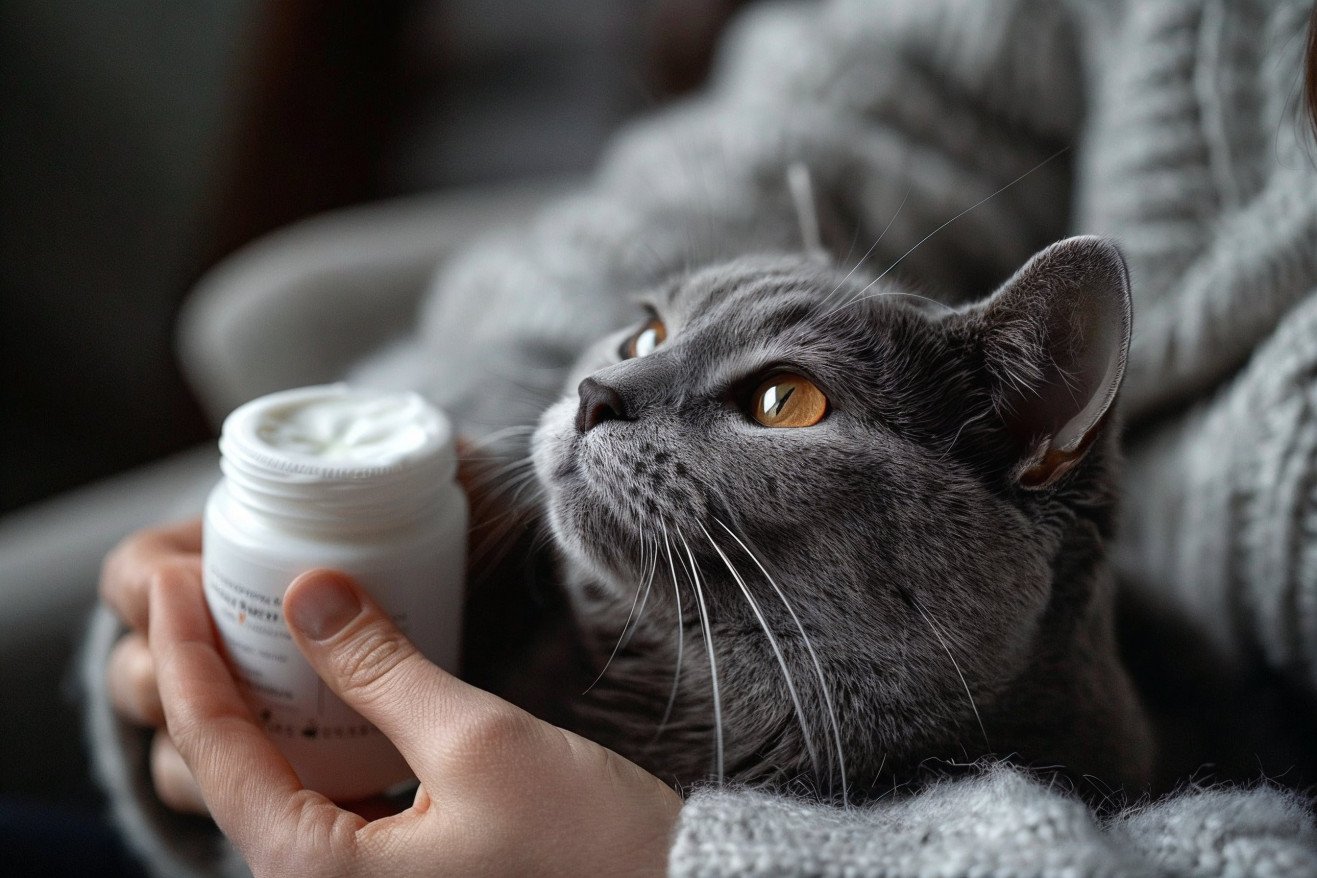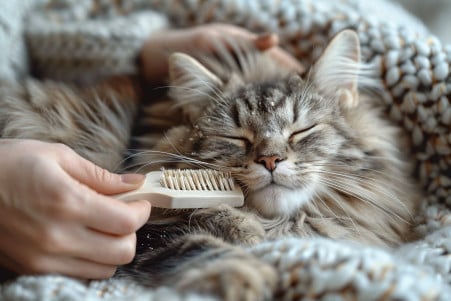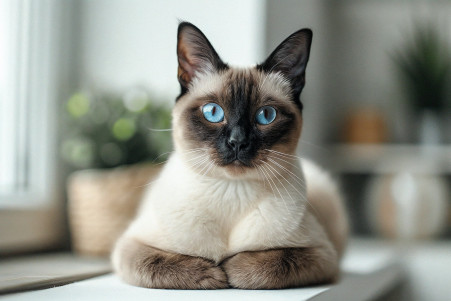Hot Spots on Cats: Causes, Symptoms and Treatment
3 May 2024 • Updated 1 May 2024

If you've seen your cat licking or chewing the same spot over and over again, you may be witnessing the symptoms of hot spots, which are red, inflamed skin lesions that can be painful and uncomfortable. Hot spots on cats, also known as acute moist dermatitis, are localized skin infections that can occur as a result of self-trauma, such as excessive licking, biting or scratching, that is caused by an underlying issue like allergies, insect bites, poor grooming or stress. If not treated, hot spots can cause a lot of pain and discomfort and can even lead to more severe issues.
In order to give you a complete understanding of this common condition in cats, we will take a deep dive into the scientific research on the causes, symptoms, diagnosis and treatment of hot spots on cats. By citing reputable veterinary references and case studies, we hope to give you a well-rounded view of this irritating skin condition so that you can better understand what might be causing it, how you can help your cat feel better, and when it's time to seek help from a vet.
What causes hot spots on cats?
Identifying and Addressing Underlying Causes
Identifying and addressing the underlying causes of hot spots in cats is crucial for effective management and prevention of recurrence. Common triggers include allergies (both food and environmental), parasites like fleas and mites, skin conditions, and stress or anxiety. According to Orange Park Vets, allergies or bugs can provoke itchiness year-round, potentially leading to hot spots. Treating only the surface symptoms provides temporary relief, while pinpointing and resolving the root cause is key for long-term results.
For cats with food allergies, Vet Organics recommends transitioning to a well-balanced, grain-free diet and consulting your veterinarian about novel protein sources. Environmental allergies may require allergy testing, as highlighted by Joii Pet Care, followed by measures like air filters and frequent vacuuming to reduce exposure to triggers.
Parasites are another common culprit, making regular flea and mite prevention essential. Joii Pet Care advises using comprehensive parasite control products and frequently cleaning your cat's living areas. Grooming plays a role too – brushing regularly and keeping fur trimmed can improve topical treatment penetration.
Finally, stress and anxiety should not be overlooked as potential contributors. Vet Organics suggests environmental enrichment through playtime, scratching posts, and calming pheromones to reduce over-grooming behaviors. By addressing underlying issues holistically, you can break the itch-lick cycle and promote lasting skin health for your feline friend.
Home Remedies and Topical Treatments for Hot Spots
Proper home care is important for treating hot spots in cats. According to FirstVet, the first step is to carefully clip the hair around the affected area - this is not something to attempt at home, as it requires expertise to avoid further irritation. The skin lesion should then be gently cleaned with a mild antibacterial soap and thoroughly rinsed.
To help with the itch and inflammation, Healthcare for Pets says that a thin layer of over-the-counter 1% hydrocortisone cream can be applied one to two times a day. Vitamin E oil or unscented, alcohol-free aloe vera gel can also be used to help the skin heal. HICC Pet recommends natural remedies like coconut oil, apple cider vinegar, and aloe vera to help calm the skin.
An Elizabethan collar may be needed to prevent further licking, scratching or biting, as noted by FirstVet. It's also important to make sure the area is kept clean and dry while it heals. With the right home remedies and topical treatments, many hot spots can be treated at home without the need for a vet visit.
Holistic and Natural Hot Spot Remedies
Holistic and natural hot spot remedies can help you avoid the side effects of traditional treatments and may even help you get to the root of the problem. Earth Animal suggests using fresh aloe vera gel directly on the affected area to help soothe the skin. They also recommend mixing baking soda with warm water to create a paste that can be used to help relieve itching.
Shake - Organic Pet discusses the use of chamomile, which has anti-inflammatory and antiseptic properties, in tea, tincture, balm, and ointment forms. Lavender essential oil, when diluted with a carrier oil, can also help relieve the burning sensation of hot spots according to Northwest Holistic Pet Care.
In addition to topical treatments, dietary changes and supplements can help improve skin health and reduce inflammation. Vet Organics suggests a natural, grain-free diet and omega-3, 6, and 9 fatty acid supplements. Holistic vets may also recommend alternative treatments such as acupuncture to help manage hot spots and their causes.
When to See a Vet for Hot Spots
Hot spots on cats should be seen by a vet as soon as possible, especially if the hot spots are severe or if your cat is in a lot of pain. Vetericyn notes that hot spots are painful and that you should take your cat to the vet if the hot spot hasn’t improved within a day, as it’s unlikely to heal on its own and will require professional intervention.
Vets can prescribe stronger medications, including antibiotics and anti-inflammatories, to help clear up the infection and make your cat more comfortable. BeChewy says that the typical veterinary treatment for hot spots includes shaving the hair around the hot spot, cleaning and drying the area, applying topical medications, and prescribing antibiotics. In some cases, a veterinary dermatologist may be brought in to diagnose and treat any underlying skin issues that may be contributing to or causing the hot spots.
If you’ve tried home remedies and treatments and the hot spot isn’t getting better within a reasonable amount of time, it’s important to see a vet. As Joii Pet Care points out, if hot spots are left untreated, they can get worse and more difficult to treat. It’s important to follow your vet’s treatment and management plan to avoid the hot spot coming back and to avoid any potential complications.
Preventing and Managing Hot Spots in the Long Term
To prevent hot spots from coming back in cats, the underlying issues that caused them in the first place need to be addressed. According to Purina, skin problems like food or environmental allergies are the most common cause of hot spots. While treating the symptoms will help in the short term, the only way to ensure that hot spots don’t return is to figure out what’s causing them and then treat that issue.
In addition, regular grooming, including brushing and bathing, can be important to keep your cat’s skin and coat healthy, according to Vet Organics. Regular cleaning and the use of flea and parasite preventatives can also help keep your cat’s skin from getting irritated by these common issues.
It’s also important to make sure that your cat is in a comfortable, stress-free environment, according to Vet Organics. Environmental enrichment, including playtime, scratching posts, and calming pheromones, can help reduce stress and the grooming that can lead to hot spots.
Finally, a healthy diet and the right supplements can help support your cat’s skin and coat health, according to Vet Organics. In some cases, cats with ongoing skin problems or allergies may need to be on medications or treatment plans for the long term that are prescribed by their vet.
Conclusion: How to Help Cats With Hot Spots
Hot spots on cats can be a frustrating and painful condition, but with the right care and management, they can be effectively treated and prevented. This article has provided a comprehensive overview of the causes, symptoms, and various treatment strategies for hot spots in cats.
It's essential to address the underlying issues, such as allergies, parasites, and stress, to break the itch-lick cycle and promote long-term skin health. Proper home care, including gentle cleaning, the use of soothing topical treatments, and preventing further irritation, can be highly effective. For more severe or persistent cases, seeking veterinary attention is crucial, as professionals can provide more potent medications and treatments.
Incorporating holistic and natural remedies can also offer benefits in managing hot spots, while supporting overall skin health through dietary changes and supplements. Ultimately, a comprehensive approach that addresses both the immediate hot spot and any underlying causes is key to ensuring long-term resolution.
By working closely with their veterinarian and implementing a tailored management plan, cat owners can help their furry friends find comfort and live happily, free from the discomfort of hot spots.


